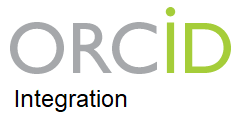First reported case in Panama of Baraitser Winter Syndrome
[First reported case in Panama of Baraitser Winter Syndrome]2024-04-30
Downloads
Keywords:
enfermedades raras, discapacidad intelectual, Síndrome de Baraitser WinterKeywords:
Rare disease, intellectual disability, Baraitser Winter SyndromeAbstract
El síndrome cerebro-frontal-facial de Baraitser-Winter (BWCFF) se origina a partir de mutaciones sin sentido, heterocigóticas, en uno de los dos genes ubicuos que codifican la actina citoplásmica, ya sea ACTB o ACTG1. Este síndrome es una combinación de malformaciones faciales y cerebrales. Entre las malformaciones faciales que podemos observar, destacan el coloboma de iris, la ptosis bilateral, el hipertelorismo, el puente nasal ancho y los pliegues epicánticos prominentes. Las malformaciones cerebrales incluyen la paquigiria, la heterotopia de banda subcortical y las anomalías del cuerpo calloso.
En este contexto, presentamos el caso de una niña de 11 años que presentaba algunos rasgos faciales distintivos, además de malformaciones cerebrales, baja estatura, discapacidad cognitiva moderada, y retraso del habla y lenguaje. Mediante secuenciación por exoma clínico dirigido, se identificó una variante sin sentido heterocigota de Novo en ACTB: c.617G>A (p. Arg206Gln).
Abstract
The Baraitser-Winter cerebral-front-facial syndrome (BWCFF) is caused by heterozygous nonsense mutations in one of the two ubiquitous genes encoding cytoplasmic actin, either ACTB or ACTG1. The syndrome combines facial and cerebral malformations. Among the facial malformations that can be observed are iris coloboma, bilateral ptosis, hypertelorism, broad nasal bridge, and prominent epicanthic folds. The cerebral malformations include pachygyria, subcortical band heterotopia, and anomalies of the corpus callosum.
We present the case of an 11-year-old girl who had some distinctive facial features, as well as cerebral malformations, short stature, moderate cognitive disability, and speech and language delay. Targeted clinical exome sequencing identified a heterozygous de novo nonsense variant in ACTB: c.617G>A (p. Arg206Gln).
References
Verloes A, Di Donato N, Masliah-Planchon J et al. Baraitser-Winter cerebrofrontofacial syndrome: delineation of the spectrum in 42 cases. Eur J Hum Genet. 2015;23(3):292-301. doi:10.1038/ejhg.2014.95
Dugina VB, Shagieva GS, Kopnin PB. Biological Role of Actin Isoforms in Mammalian Cells. Biochemistry (Mosc). 2019 jun;84(6):583-592. doi: 10.1134/S0006297919060014. PMID: 31238858.
Pollard TD, Cooper JA. Actin, a central player in cell shape and movement. Science. 2009 nov 27;326(5957):1208-12. doi: 10.1126/science.1175862. PMID: 19965462; PMCID: PMC3677050.
Kojic M, Wainwright B. The Many Faces of Elongator in Neurodevelopment and Disease. Front Mol Neurosci. 2016 nov 1; 9:115. doi: 10.3389/fnmol.2016.00115. PMID: 27847465; PMCID: PMC5088202.
Yates TM, Turner CL, Firth HV, Berg J, Pilz DT. Baraitser-Winter cerebrofrontofacial syndrome. Clin Genet. 2017 jul;92(1):3-9. doi: 10.1111/cge.12864. Epub 2016 Nov 30. PMID: 27625340.
Baraitser M, Winter RM. Iris coloboma, ptosis, hypertelorism, and mental retardation: a new syndrome. J Med Genet. 1988 Jan;25(1):41-3. doi: 10.1136/jmg.25.1.41. PMID: 3351890; PMCID: PMC1015421.
Verloes A, Drunat S, Pilz D, Di Donato N. Baraitser-Winter Cerebrofrontofacial Syndrome. 2015 Nov 19 [updated 2022 Mar 24]. In: Adam MP, Mirzaa GM, Pagon RA, Wallace SE, Bean LJH, Gripp KW, Amemiya A, editors. GeneReviews® [Internet]. Seattle (WA): Universityof Washington, Seattle; 1993–2023. PMID: 26583190.
Rossi M, Guerrini R, Dobyns WB, Andria G, Winter RM. Characterization of brain malformations in the Baraitser-Winter syndrome and review of the literature. Neuropediatrics. 2003 Dec;34(6):287-92. doi: 10.1055/s-2003-44666. PMID: 14681753.
Fryns JP, Aftimos S. New MR/MCA syndrome with distinct facial appearance and general habitus, broad and webbed neck, hypoplastic inverted nipples, epilepsy, and pachygyria of the frontal lobes. J Med Genet. 2000 Jun;37(6):460-2. doi: 10.1136/jmg.37.6.460. PMID: 10928857; PMCID: PMC1734613.
Winter RM. Cerebro-fronto-facial syndrome: three types? Clin Dysmorphol. 2001 Apr;10(2):79-80. doi: 10.1097/00019605-200104000-00001. PMID: 11311000.
Orphanet: Síndrome cerebrofrontofacial de Baraitser Winter. Orpha.net. Recuperado el 21 de julio de 2023, de https://www.orpha.net/consor/cgi-bin/OC_Exp.php?lng=ES&Expert=2995
Bissonnette B, Luginbuehl I, Engelhardt T(Eds.). Baraitser-winter syndrome (bws). In: Syndromes: Rapid Recognition and Perioperative Implications, 2e. McGraw Hill. https://accessanesthesiology.mhmedical.com/content.aspx?bookid=2674§ionid=22052203
License
Copyright (c) 2024 Infomedic Intl.Derechos autoriales y de reproducibilidad. La Revista Pediátrica de Panamá es un ente académico, sin fines de lucro, que forma parte de la Sociedad Panameña de Pediatría. Sus publicaciones son de tipo gratuito, para uso individual y académico. El autor, al publicar en la Revista otorga sus derechos permanente para que su contenido sea editado por la Sociedad y distribuido Infomedic International bajo la Licencia de uso de distribución. Las polítcas de distribución dependerán del tipo de envío seleccionado por el autor.






